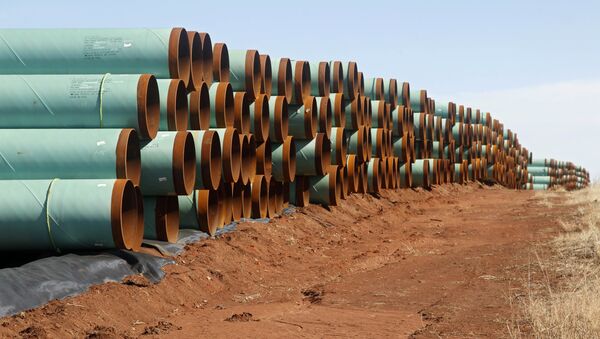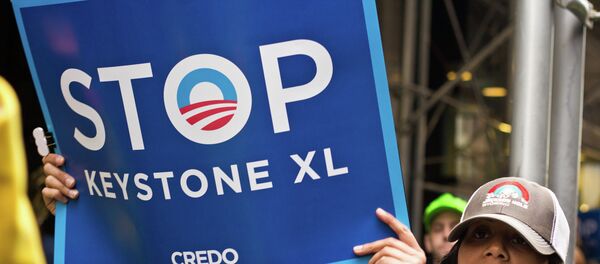Documents obtained through a FOIA request show that in October of 2012, a section of the pipeline — which transports oil from the Alberta tar sands — was shut for several days in response to dangerous levels of erosion detected during a mandatory inspection of the pipeline.
In one particular area, 95% of the wall had corroded, leaving it at a thickness equivalent to one third of a dime.
"It is highly unusual for a pipeline not yet two years old to experience such deep corrosion issues," Evan Vokes, a former TransCanada pipeline engineer who has since become a whistleblower, told DeSmogBlog. "Something very severe happened that the public needs to know about."
But both TransCanada and the Pipeline and Hazardous Materials Safety Administration (PHMSA), who handed over the documents, have so far stayed silent as to the cause of the problem, or whether a spill was also detected at the same time as the damage.
At the time, when TransCanada shut down the pipeline for repairs for four and a half days, the PHMSA told the press that it was due to "possible safety issues," but did not elaborate, even though an agency engineer visited the repair site in Missouri.
The existing part of the Keystone 1 pipeline runs 2,100 miles from Hardisty, Alberta to Patoka, Ill., while the proposed Keystone XL extension would start in Alberta at the same place, then cut across Montana, South Dakota and Nebraska.
— BuildKXLNow (@BuildKXLNowORG) January 22, 2014
The documents — released to DeSmogBlog in April as a partial response to an August 2013 FOIA request — are the first acknowledgement of the nature of the damage — multiple sites of severe corrosion, or "anomalies."
In addition to the site with 95% corrosion, three other sites with corrosion ranging from 78%-83% were also found within four miles downstream of the original "anomaly."
While the part of the FOIA request asking for any findings regarding spilled oil at the sites of corrosion was not fulfilled, one document does indicate that as of the day immediately following the detection of the corrosion, "hydrocarbons have not been detected thus far at the site."
Vokes, who estimated that the loss to TransCanada shareholders during the shutdown was $20 million, said he wasn't surprised that there would be problems, as he'd witnessed TransCanada's disregard for risk while he worked there.
In 2011, Vokes leaked documents about risky company behavior to the Canadian National Energy Board and PHSMA, and others about compliance practices to the Canadian Senate.
He speculated that more information about the damage will eventually bring human error or recklessness to light, "because there are adequate checks and balances in the regulations to avoid this."
Ammunition for Keystone XL Opponents
Documents were also released relating to southern extension of the pipeline — known as the Gulf Coast pipeline, which runs from Cushing, Okla. to Nederland, Texas. A final inspection report of this extension cited at least seven areas of the pipeline that were deemed unsatisfactory in terms of code compliance.
The information adds fuel to the fires of opposition to the contentious Keystone XL extension. Critics contend that the structure would not only be environmentally damaging due to the oil it would allow to be burnt, but also to the landscapes it would run through, if a spill were to occur. In particular opponents worry about the possible pollution of the delicate Sand Hills ecosystem of Nebraska and the massive Ogallala aquifer.
In recent pretrial hearing testimony to the Public Utilities Commission, TransCanada failed to disclose either the corrosion incidents or their unsatisfactory compliance reviews, which is a violation of The Association of Professional Engineers, Geologists and Geophysicists of Alberta's guidelines, according to Vokes.
The bill approving construction of the XL pipeline passed the US Senate on Jan. 29 and the House of Representatives on Feb. 11. President Obama vetoed the bill on Feb. 24, which the Senate was unable to override. He claimed that the decision should ultimately rest with the executive branch.




